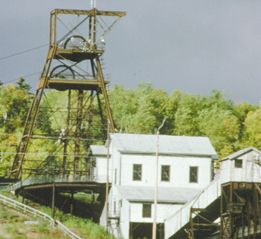Sen. Al Franken showed a serious interest in particle physics when he toured the Soudan Mine 2500-feet underground in Minnesota last week.
The former comedy writer and talk show host was full of earnest questions about the physics behind the mine's current operating experiments: a dark matter detector called the Cryogenic Dark Matter Search, or CDMS II; and a high-energy neutrino detector called the Main Injector Neutrino Oscillation Search, or MINOS. Still, occasionally, his humorous side revealed itself such as when he stopped the initial jargon-laden explanations from physicists with a helpful hint that they just "pretend he's not a physicist".
After Franken got a tour of the mine and its experiments, physicists and staff from the University of Minnesota and Fermilab outlined the research planned for NOvA, or NuMI Off-Axis Neutrino Appearance Experiment, the nearby neutrino project that will use the same particle beam as MINOS. They also explained how the project is boosting the northern Minnesota economy. NOvA has been infused with more than $40 million in American Recovery and Reinvestment Act money. The stimulus funding allowed for the May groundbreaking of the NOvA far detector site in Ash River, Minn., which will create more than 125 construction-related jobs.
Franken showed his down-to-earth side when he engrossed himself in a impromptu lunchtime, picnic-table demonstration of how a neutrino beam from Fermilab in Illinois (a knot in the picnic table) makes its way almost 500 miles underground to the MINOS detector in Soudan (a Pepsi can) and eventually will also travel to the NOvA detector in nearby Ash River (a Sprite can).
The senator left the tour with T-shirts representing both ends of the neutrino beam: Fermilab and the underground MINOS experiment.
He was invited by the University of Minnesota School Of Physics and Astronomy, Fermilab, and the Minnesota Department of Natural Resources to tour the experiments. They are housed in the Soudan Underground Mine, part of a state park. The headframe that caps the mine shaft is its most distinctive feature. Read more about the trip.
Photos courtesy of Jerry Meier, assistant laboratory manager from the University of Minnesota.









